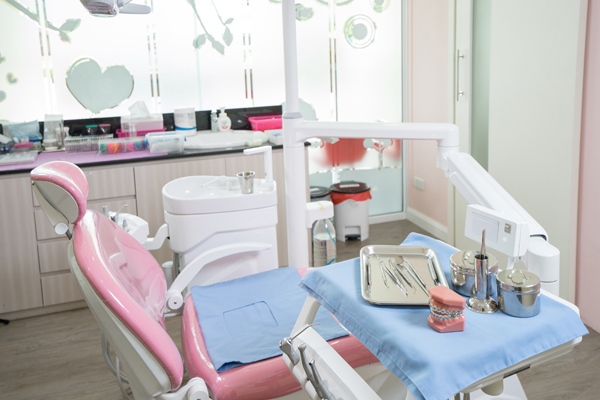Understanding Laser Frenectomy: Procedure and Recovery

Laser frenectomy changes or cuts a binding tissue or frenulum in the body with a laser. This procedure can help support your child’s oral and speech development. Traditional frenectomy uses incisions, which take longer to heal. A laser surgery like this can heal faster with the right aftercare. Here are the details that you must consider about the laser frenectomy procedure and recovery.
The procedure
A pediatric dentist will assess the child’s mouth first. A lip or tongue tie will need a laser frenectomy. This form of oral surgery will need the parent’s or guardian’s help. The child will lie face up, so the parent or guardian must hold the child during the procedure. Dental sedation can help the child relax and stay still during the procedure.
Numbing the area with an anesthetic will prevent pain. The dentist will then cut the frenulum with a laser instrument. This surgical tool will cauterize the area, which results in less bleeding. A severe lip or tongue tie will need a few stitches if the dentist performs an incision. A laser frenectomy might take about 15 minutes to complete.
For infants or toddlers
Studies show that a tongue or lip tie often manifests during infanthood. Babies with this condition are often inefficient at breastfeeding. The baby can experience significant weight loss or slow weight gain. The breastfeeding mother may also experience more pain if the baby has a lip or tongue tie. Laser frenectomy is easier to perform on infants. This procedure can take place at the clinic.
The recovery
Laser frenectomy recovery is quick and easy. Follow the dentist’s instructions to keep the healing consistent. Keep the surgical area clean. Doing so can reduce the young patient’s risk of infection. The dentist will prescribe antibiotics to help prevent possible complications or infections.
The child must take the medications according to the dentist’s instructions. The area should start healing within one or two days. A week later, it will begin to develop a scar. The child should be able to return to normal activities by this time.
Part of the child’s smooth recovery is keeping the follow-up appointments. The parents should also make sure that the child performs the recommended exercises. These workouts are essential for quick healing. Laser frenectomy does not bleed that much. However, there might be numbness.
Types of frenectomy
Maxillary laser frenectomy is for the labial frenum. This connective tissue connects the top lip to the gums above the front teeth. This frenum is shorter than a normal one. It can make speech and dental development difficult.
This type of condition is lip adhesion. It can also cause dental issues like gum disease and cavities. A laser frenectomy can free the upper lip. The child can then move it more to perform dental functions.
The lingual frenum connects the tongue to the mouth. One can see the lingual frenum underneath the tongue when the tongue stretches to the roof of the mouth. Frenum length varies from one person to another. A short frenum prevents the tongue from proper movement. Studies show that this condition is more common in boys than in girls. Lingual laser frenectomy can free the tongue to perform more movements.
The benefits of a laser frenectomy
Research shows that a laser frenectomy is often an outpatient treatment. It often takes about two to three minutes to finish. This mildly invasive treatment is less traumatic to a child. Below are the benefits of this oral procedure:
- Reduces risk of reattachment:
The goal of a laser frenectomy is to provide a permanent improvement. Stretching the child’s tongue can keep the frenum from reattaching. Laser frenectomy reduces the risk of reattachment.
Clinical studies show that kids tolerate laser frenectomy better than traditional frenectomy. This procedure is a better way to help kids and infants.
- Prevents excessive bleeding:
Laser frenectomy does not result in high-level bleeding. The laser burns the frenum and seals off the blood vessels.
The child will recover faster because laser frenectomy will not need general anesthesia.
When to call the doctor
See the dentist if a diastema is developing. The parent should also be aware of possible complications after laser frenectomy. Such complications include persistent numbness and excessive bleeding. Bring the child to the dentist if any of these symptoms manifest.
Knowing the laser frenectomy procedure and recovery can prepare you and your child well for it
A short frenum can prevent your child from practicing proper dental care. It can also impair good language development and cause oral problems. A laser frenectomy can enhance the movements of the lips and tongue. Working with your pediatric dentist can help achieve your child’s oral and language development goals.
Request an appointment here: https://www.hvkidsmiles.com or call Hudson Valley Pediatric Dentistry at (845) 363-4177 for an appointment in our Middletown office.
Check out what others are saying about our services on Yelp: Read our Yelp reviews.
Recent Posts
If a cavity develops and worsens, it could lead to the risk of a dental emergency due to an infection or severe discomfort. Dental sealants significantly reduce the risk of a dental emergency by helping to prevent cavities in vulnerable areas of teeth. Read on to learn how dental sealants can prevent a dental emergency…
Protecting your child's teeth from cavities is crucial, and dental sealants can play a significant role in preventive dentistry. These sealants are applied to the chewing surfaces of your child's molars and premolars, providing an extra layer of protection against cavities that often occur in the pits and fissures of teeth. By opting for dental…
According to the National Institute of Health, tooth decay is the most common chronic illness in the United States, with millions of people affected by minor to severe cavities. This common oral health issue is why dentists recommend that children get dental sealants as a preventive measure. Continue reading to learn more about how dental…
Dental sealants safeguard your child’s back teeth against tooth decay and infections. Although the process is painless, children can still experience some anxiety once they know they must endure a procedure. The following article will outline what parents can expect their child to experience during the dental sealant process to help calm them before the…


